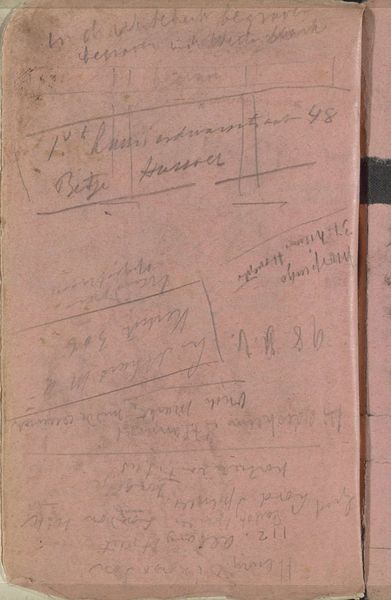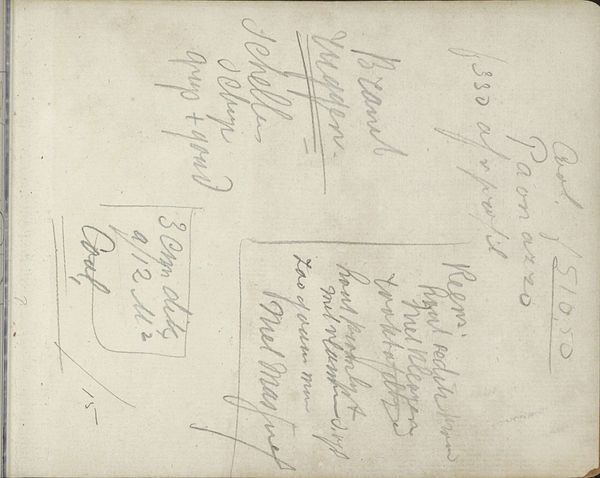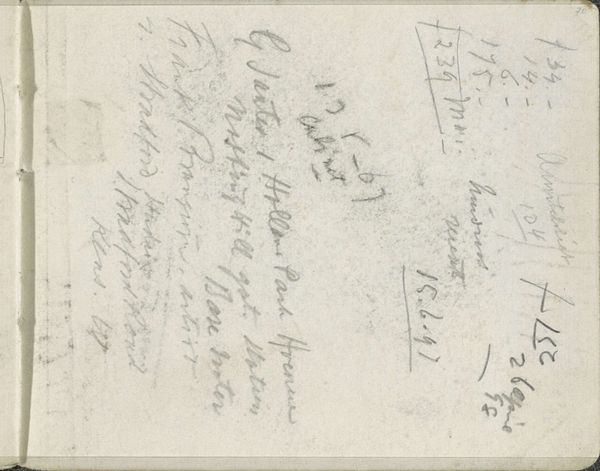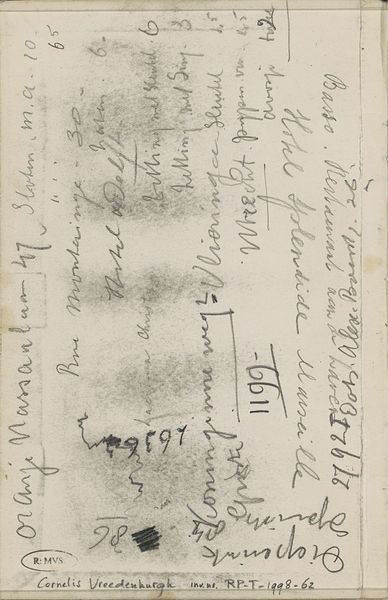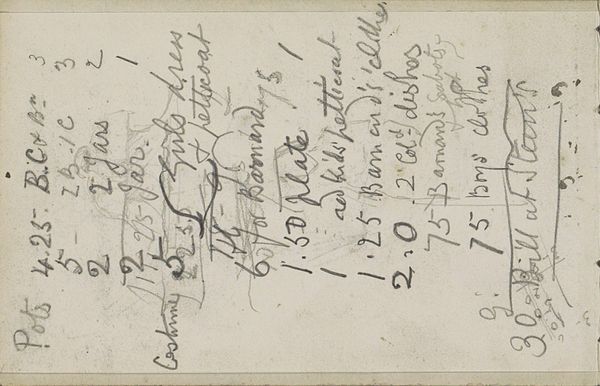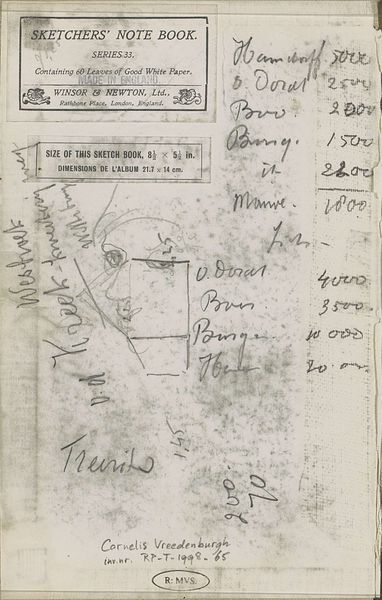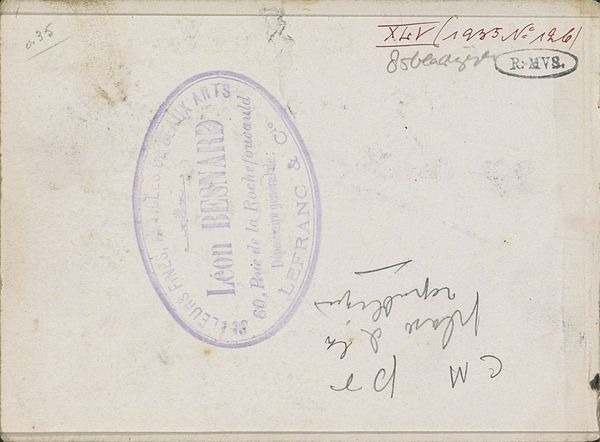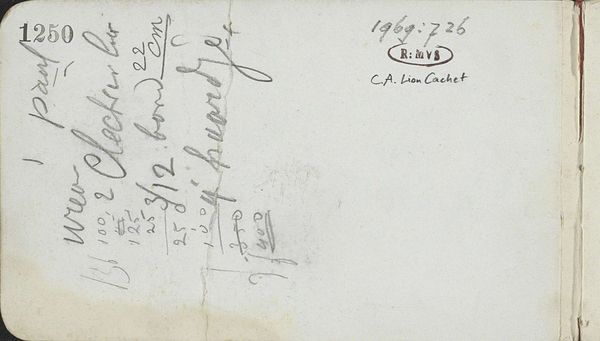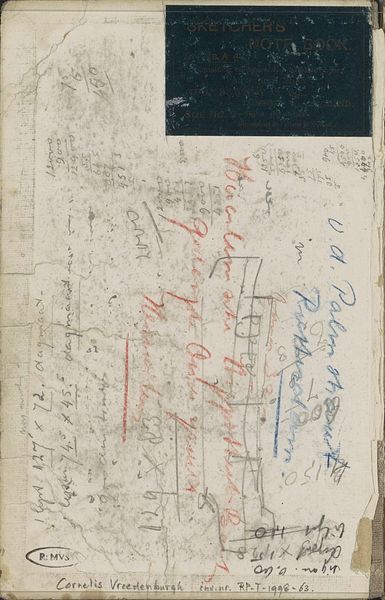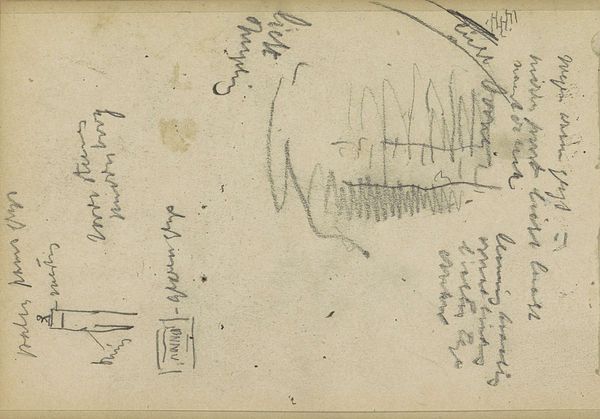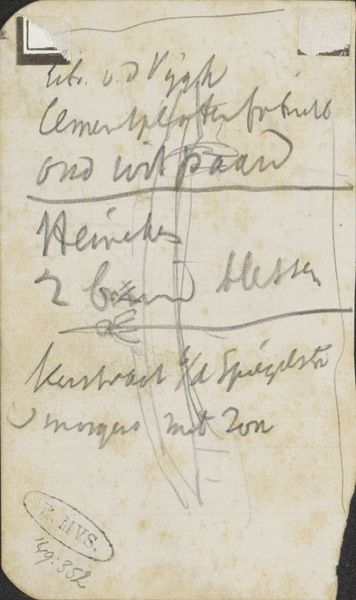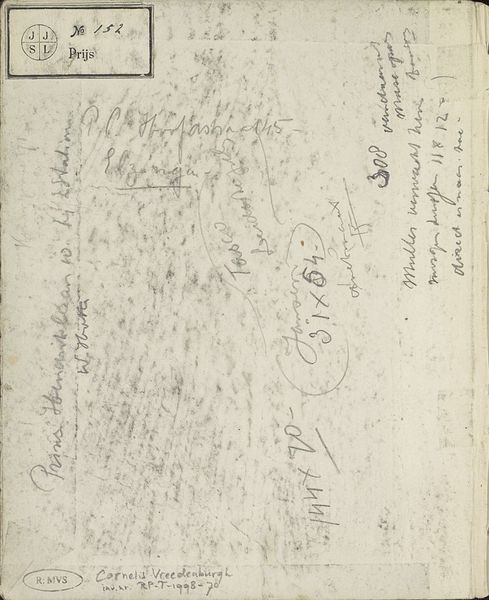
drawing, mixed-media, collage, paper, ink
#
portrait
#
drawing
#
mixed-media
#
hand written
#
collage
#
script typography
#
hand-lettering
#
hand drawn type
#
hand lettering
#
paper
#
personal sketchbook
#
ink
#
hand-written
#
hand-drawn typeface
#
fading type
#
calligraphy
#
small lettering
Copyright: Rijks Museum: Open Domain
Curator: Here we have a work from around 1928, “Ornament met vissen” by Carel Adolph Lion Cachet. It’s a mixed-media drawing, a collage on paper with ink, currently held here at the Rijksmuseum. Editor: It feels very spontaneous and immediate, like looking directly into the artist’s thought process. The hand-written text and seemingly random figures give the piece a casual, almost unfinished quality. Curator: Cachet was quite active commercially. He was designing posters, carpets and textiles at this point in his career. So perhaps we should think about this not just as a sketch but also consider what is being ornamented and its context. The sketch features text that includes prices as well as phrases like "La place des sculptures." Editor: You're right, it reads almost as notes for a project! Note the lines of fading text and various sketches seemingly fighting for space. What is the overall visual rhythm suggesting here? Curator: He was an important figure within the Dutch Arts and Crafts movement, a movement keen to blur the hierarchy of fine art and the decorative arts. He explored different textures in printing. Think of those contexts, and the nature of Dutch mercantile activity at the time. You get the sense that the collage represents his creative process itself. Editor: The dominance of script typography is intriguing. How does the form of the lettering itself contribute to the ornament? It feels at once formal and informal. Curator: In this instance, the formal elements may signify particular styles in the typography that denote prices and names of addresses. Think of invoices from businesses in the late 1920s. He is sampling from, or creating a record of, the economic culture in Amsterdam during this period. Editor: That tension, that relationship you describe, that's what gives the work such visual energy. It’s less a polished final product, and more a raw, unfiltered moment of creative brainstorming. Curator: Exactly! The work is an excellent encapsulation of this very versatile, productive Dutch artist. Editor: Definitely offers an intriguing look at the artist's process. Curator: Precisely. Now, let’s move along to the next piece…
Comments
No comments
Be the first to comment and join the conversation on the ultimate creative platform.
